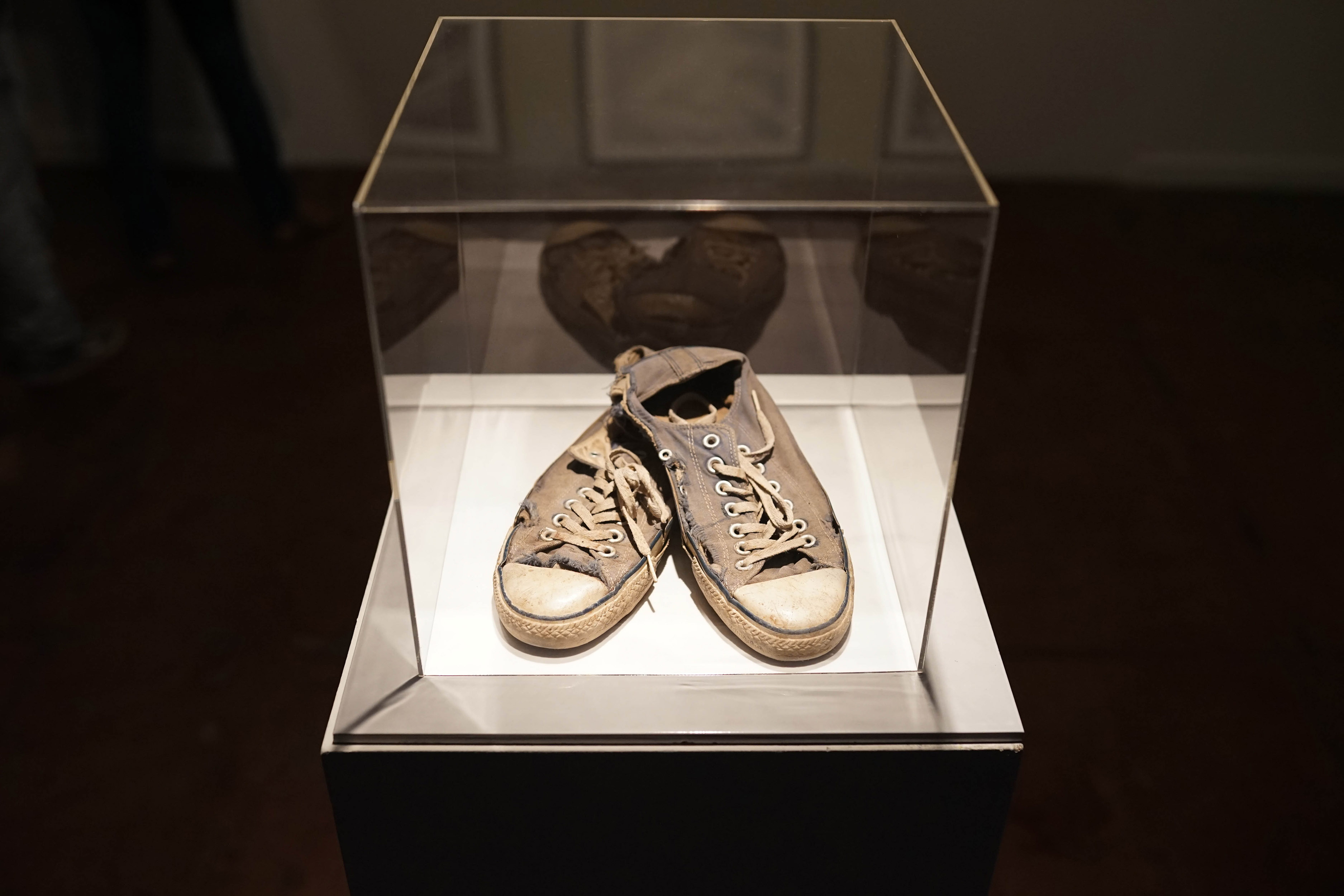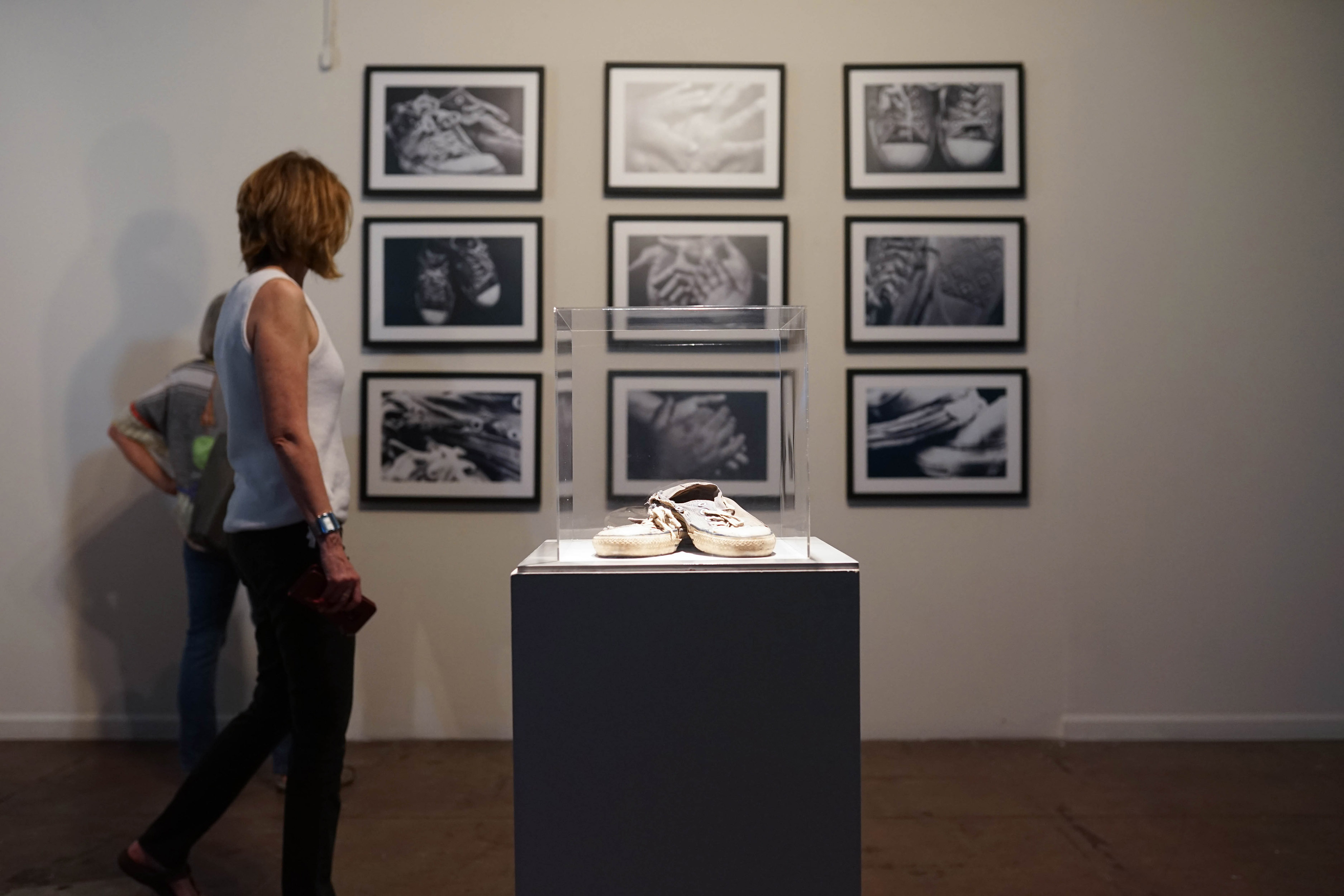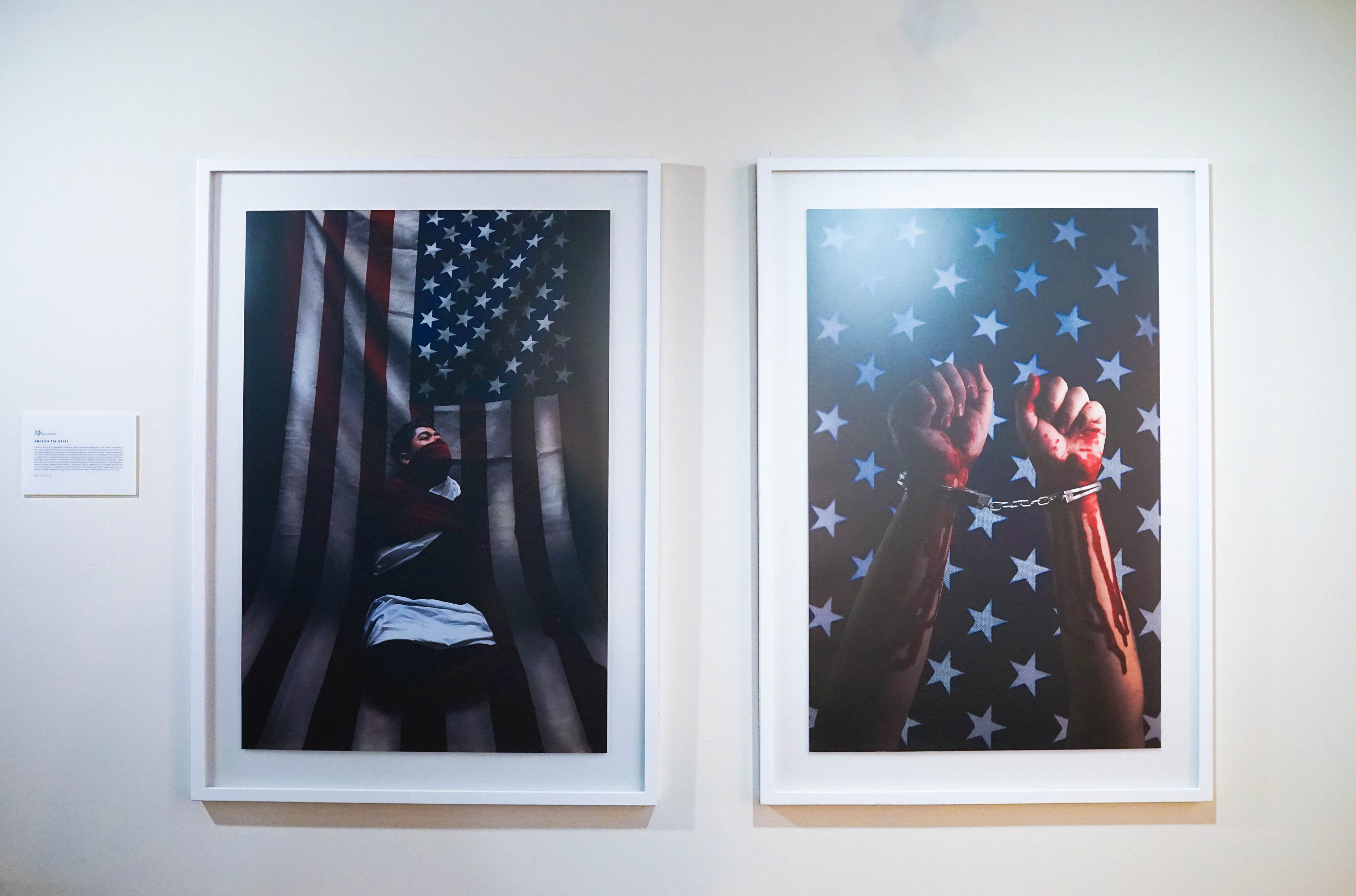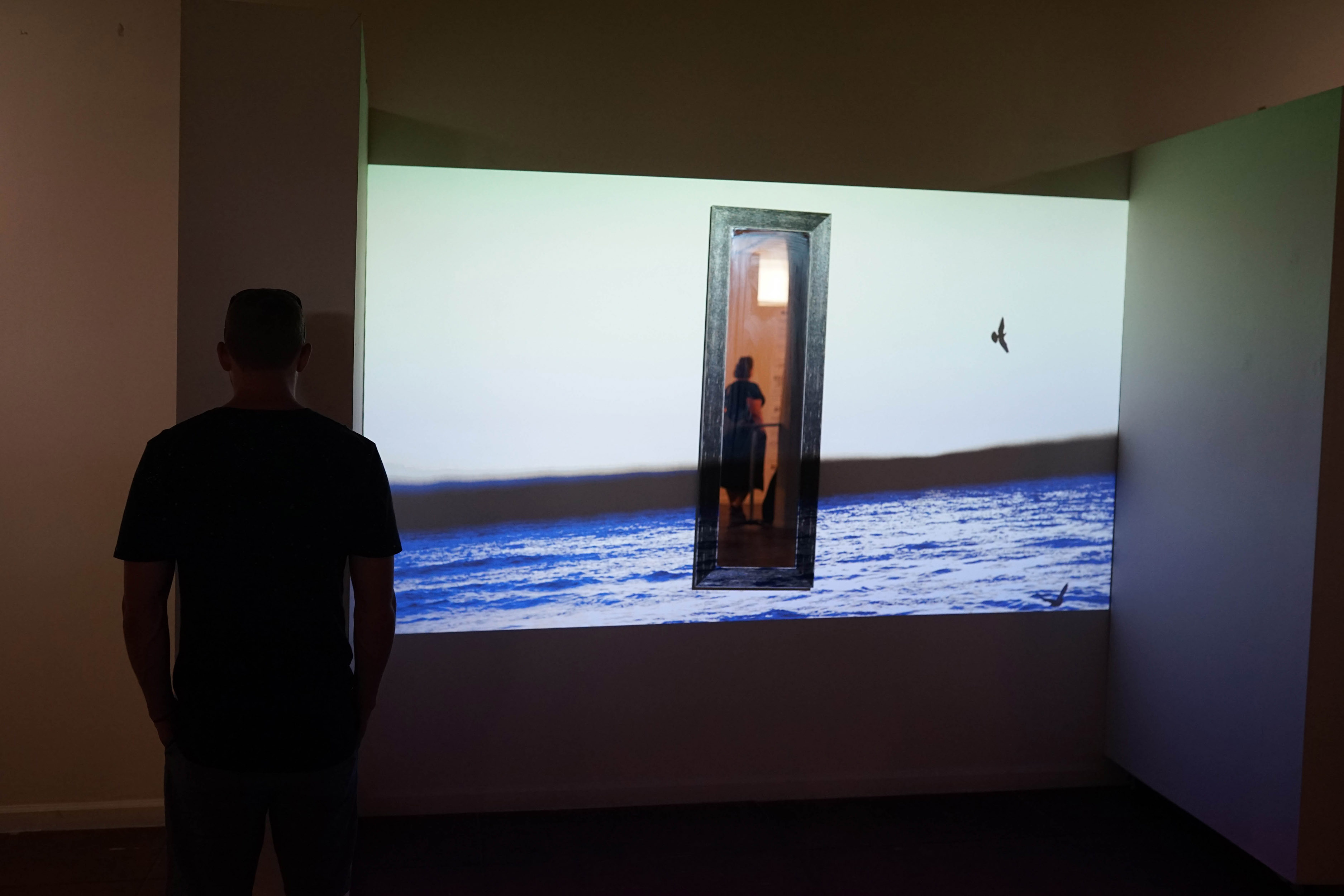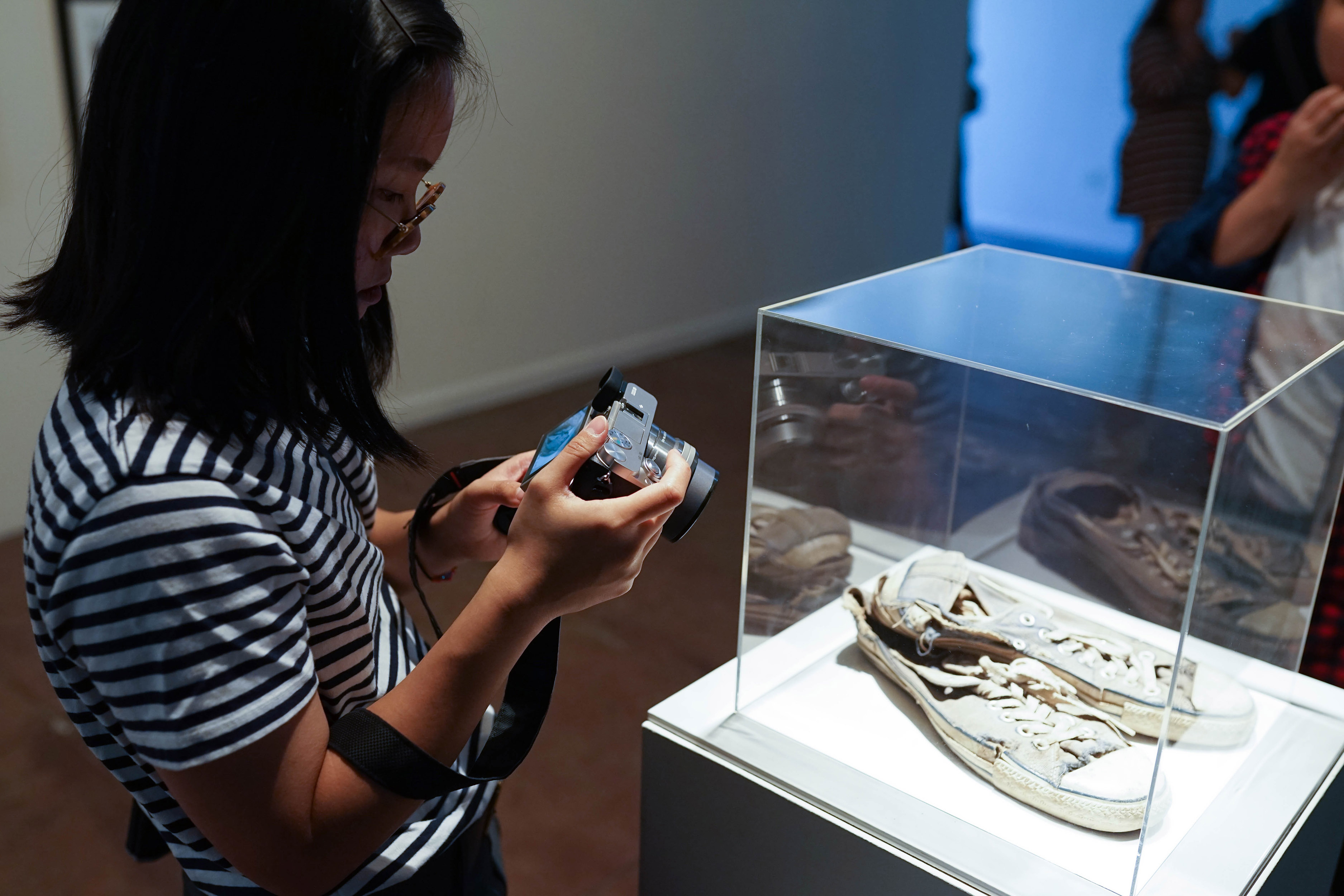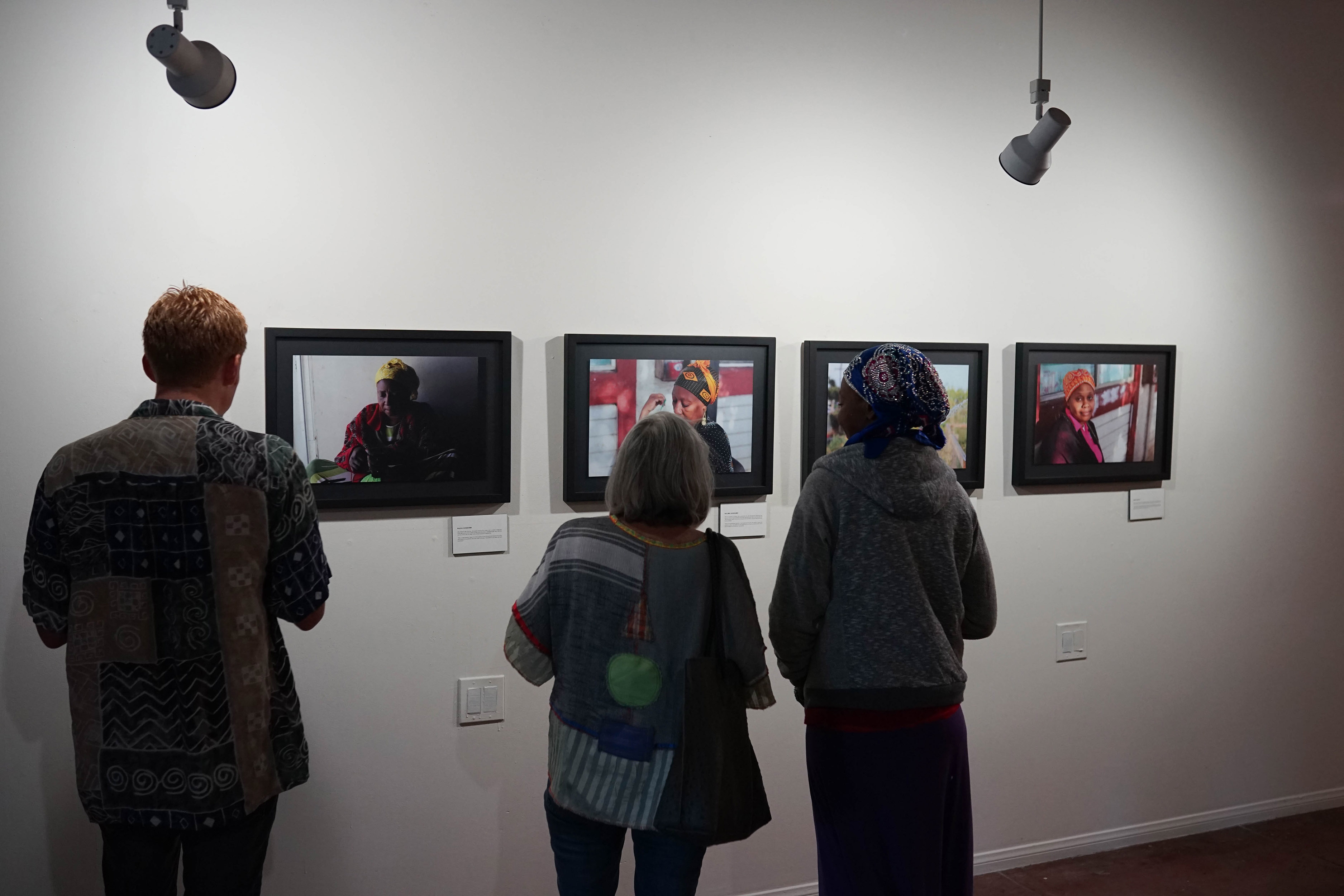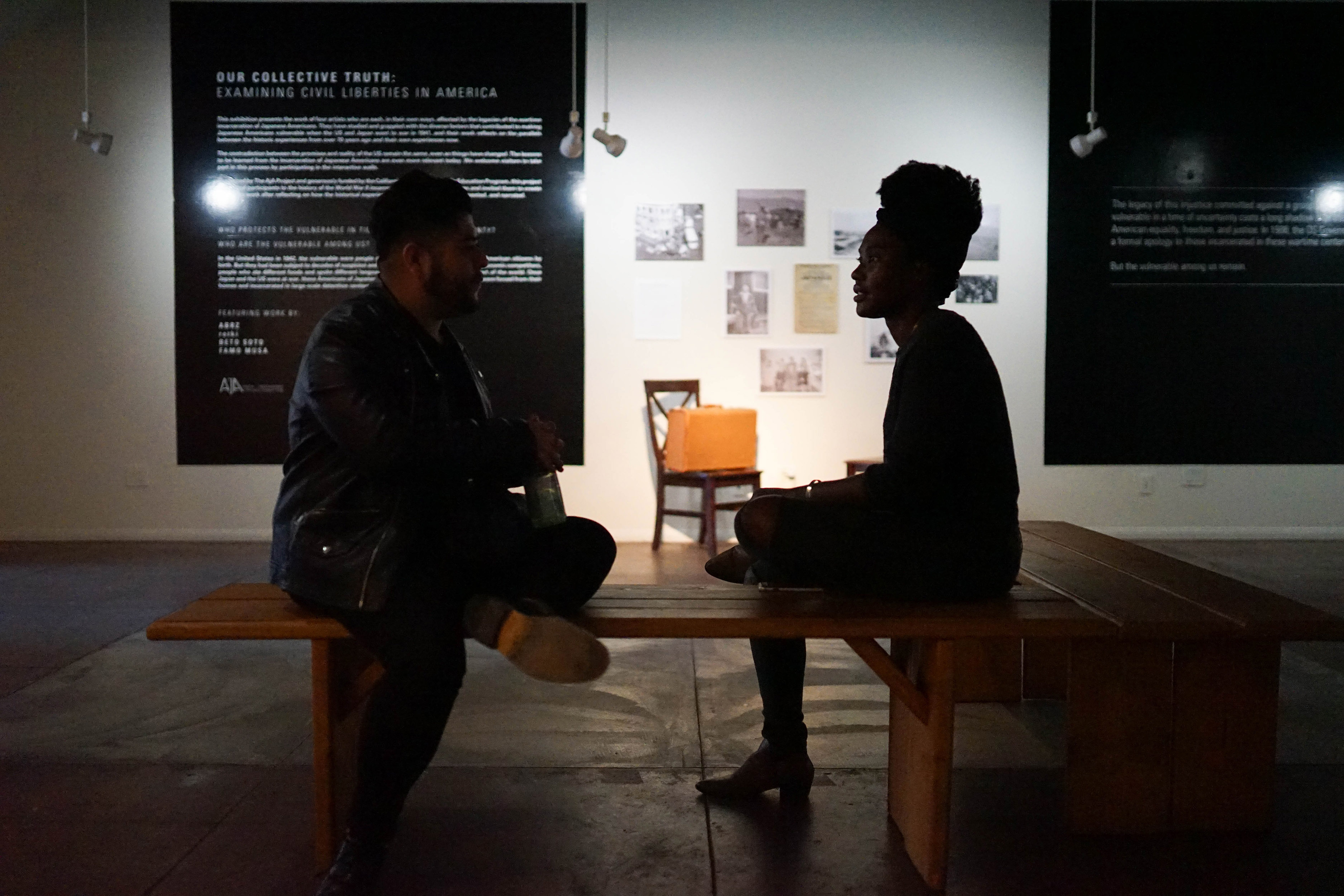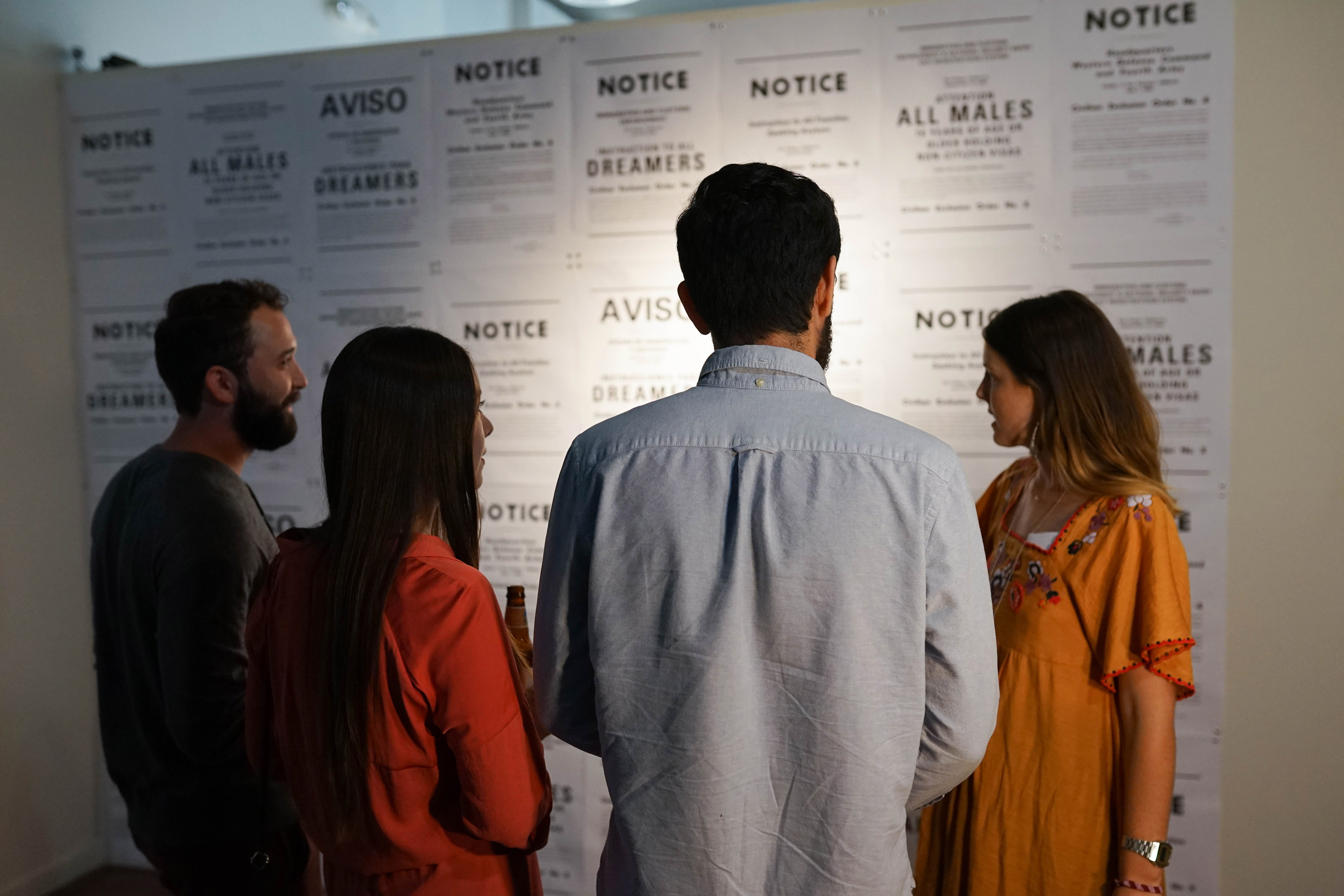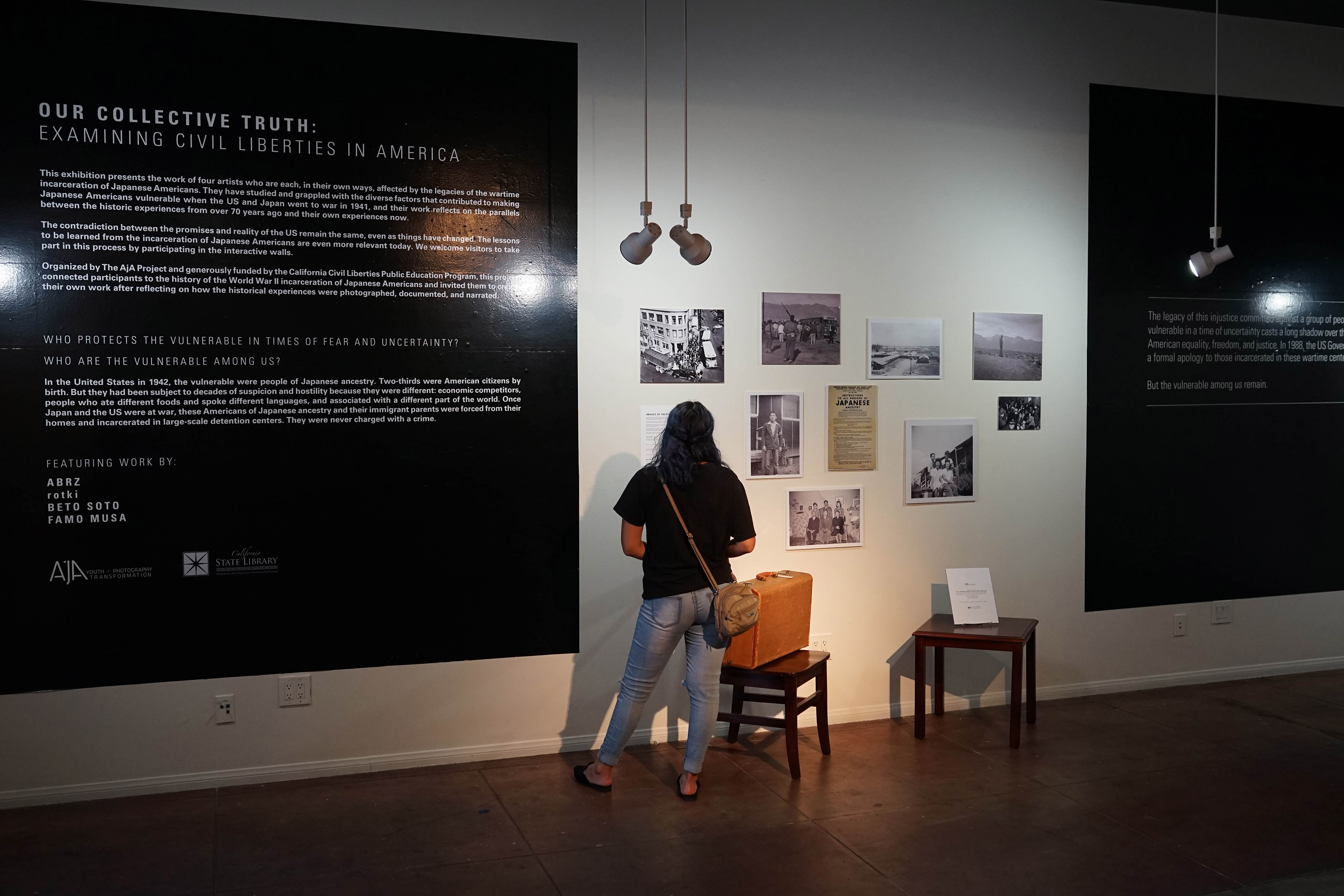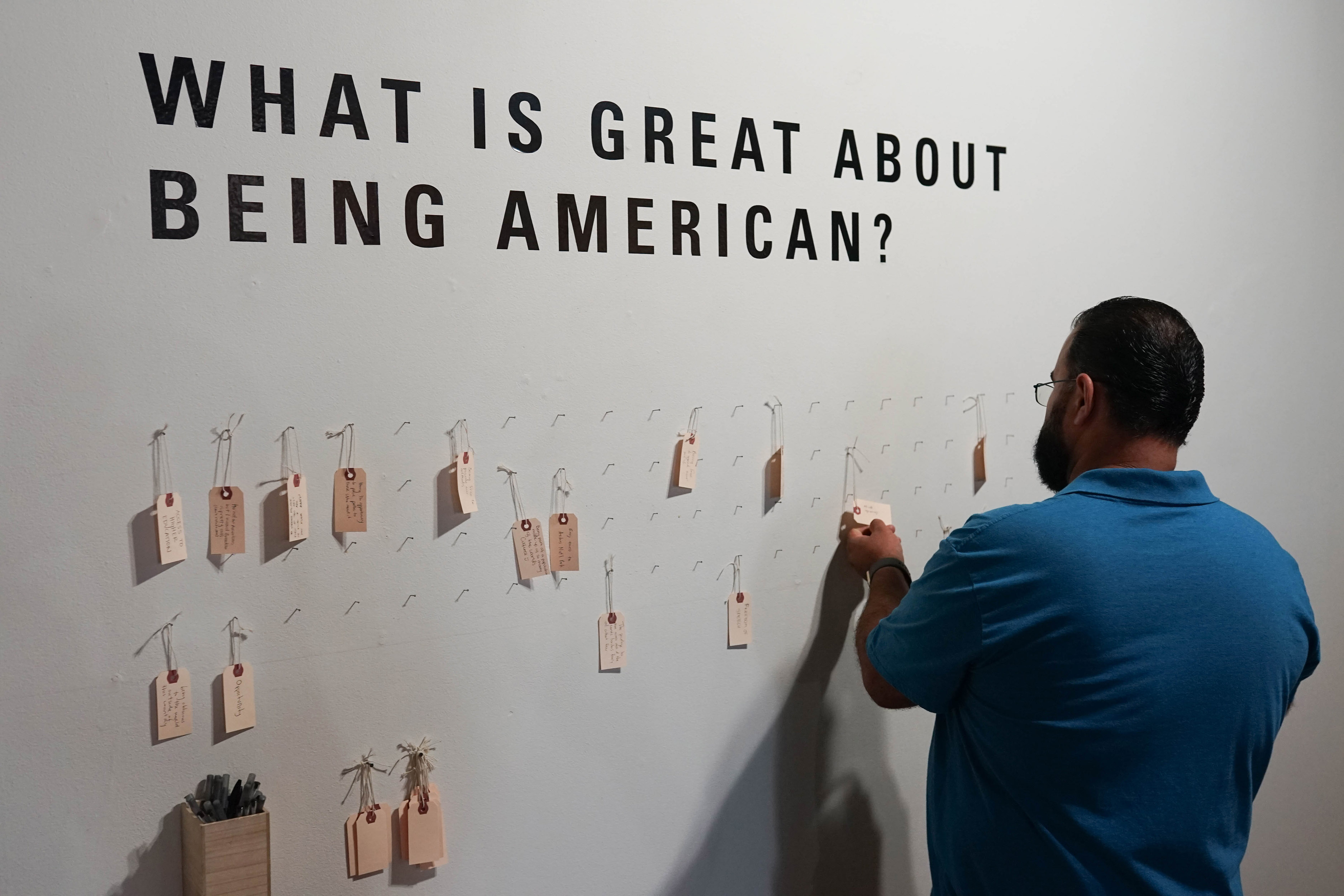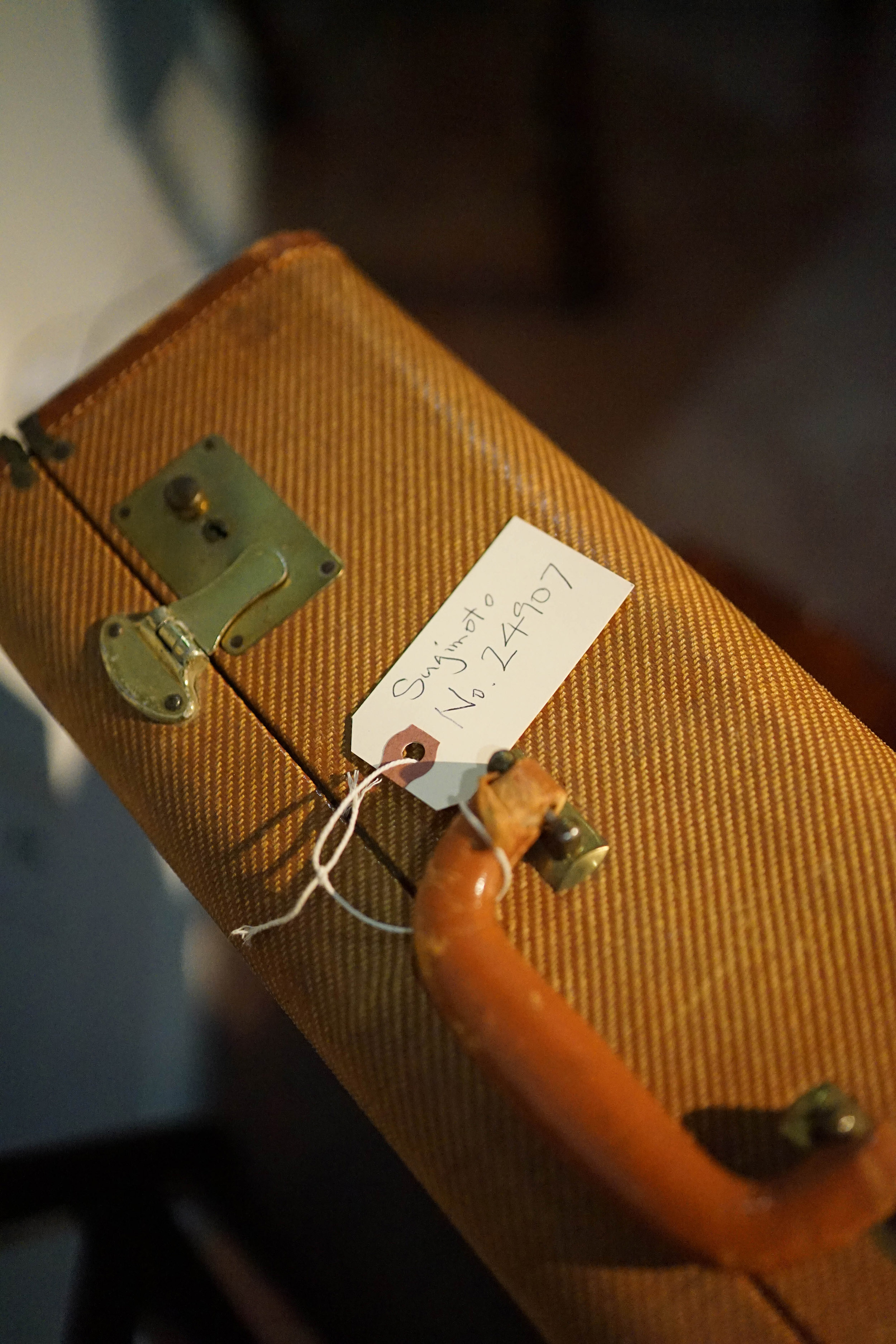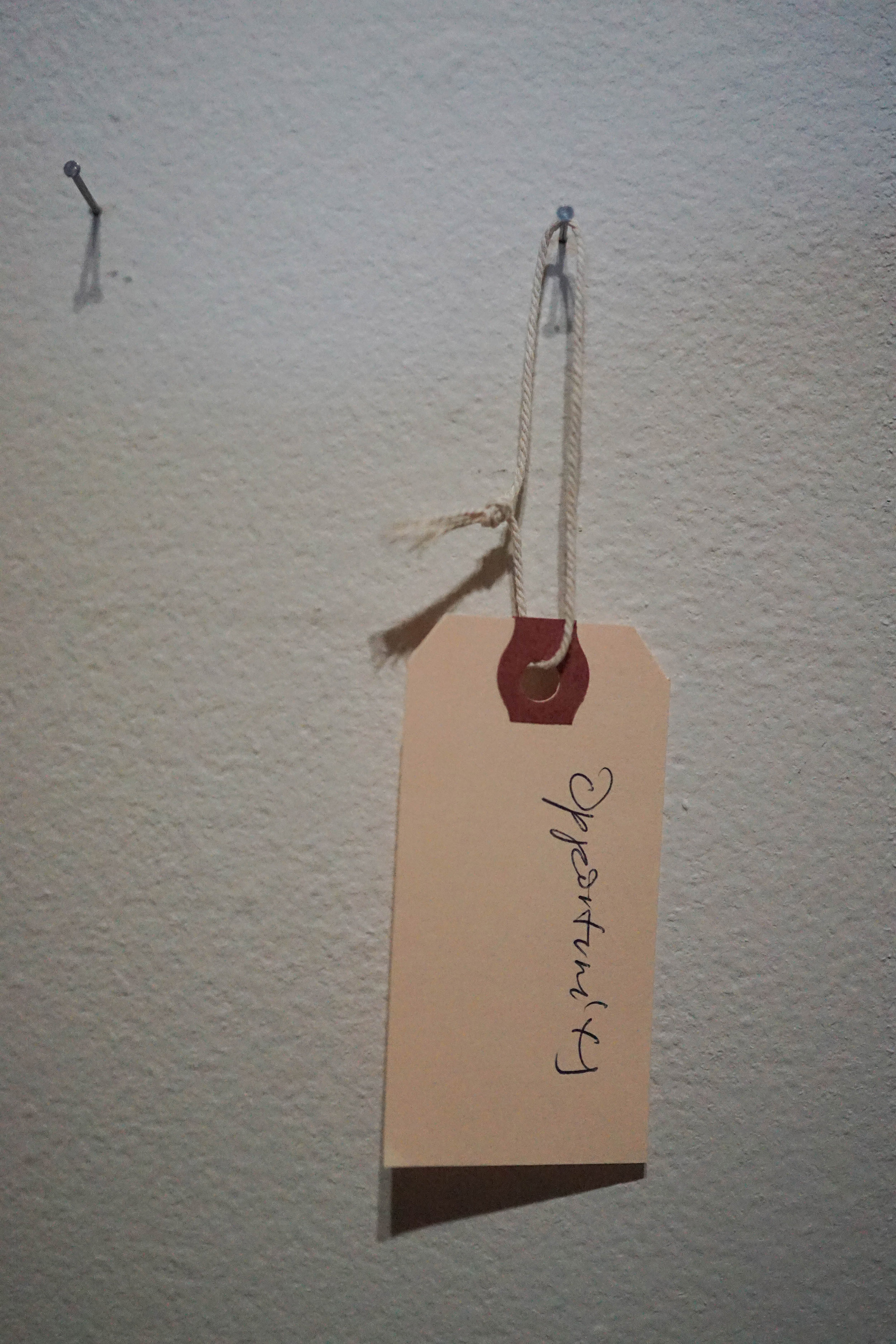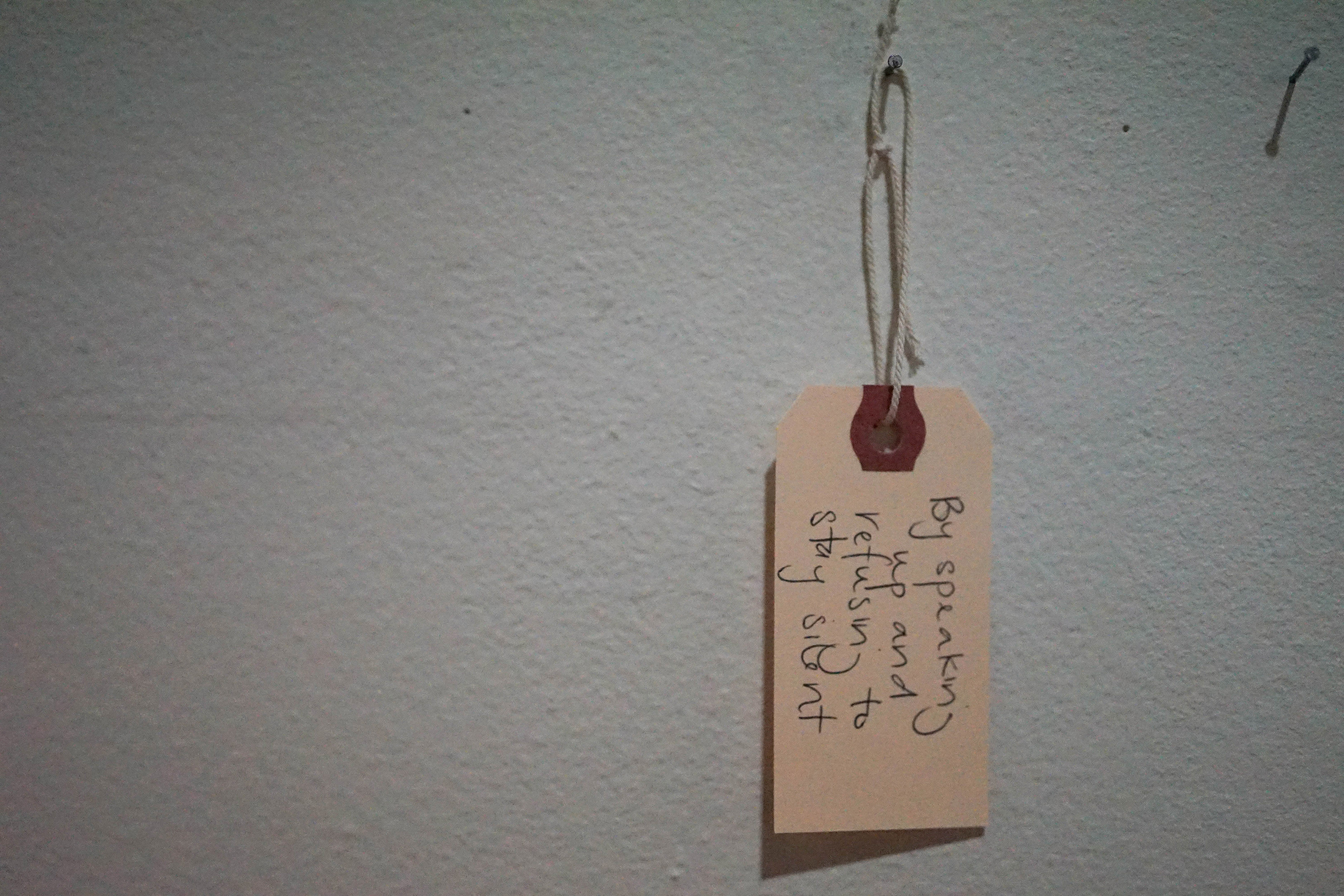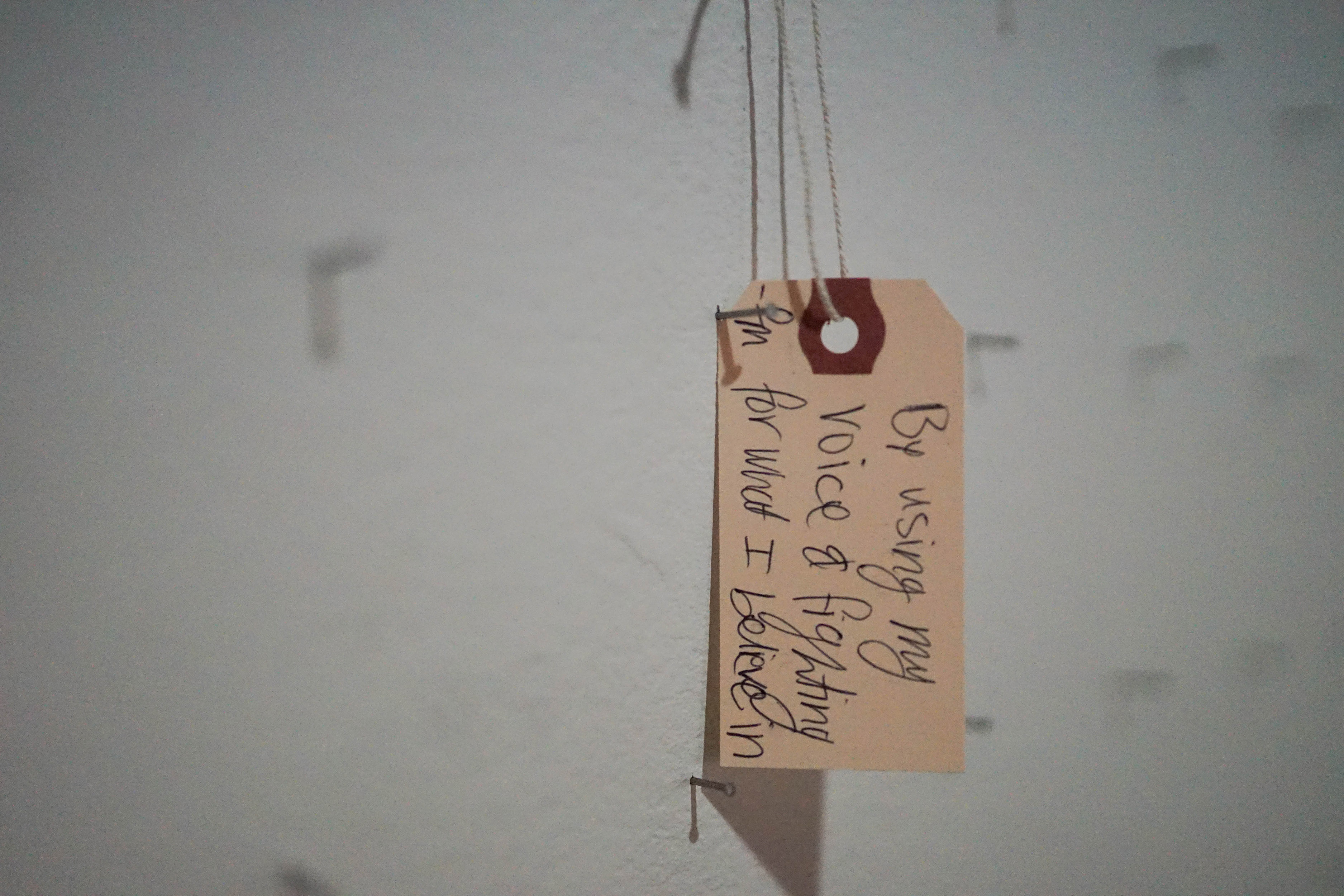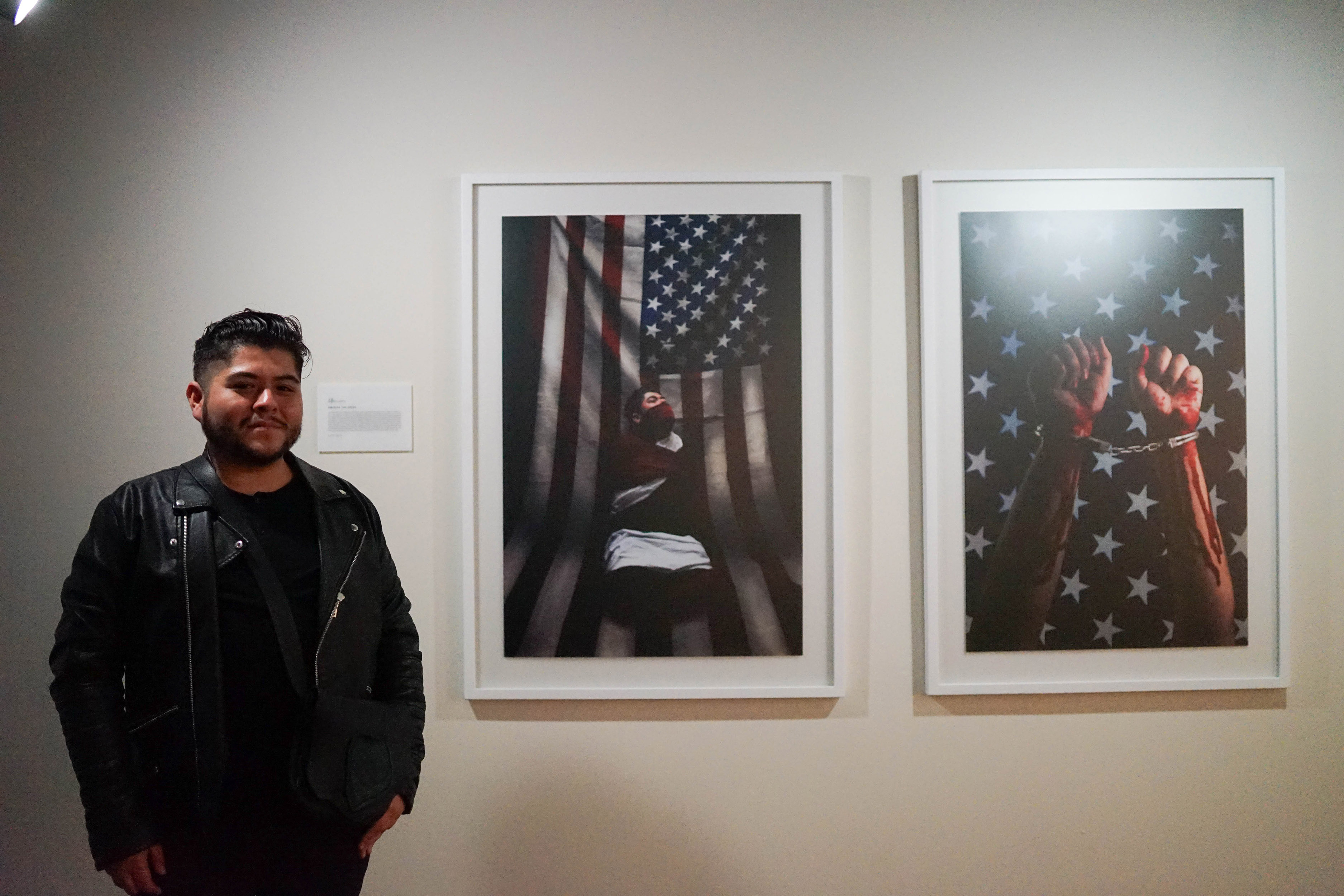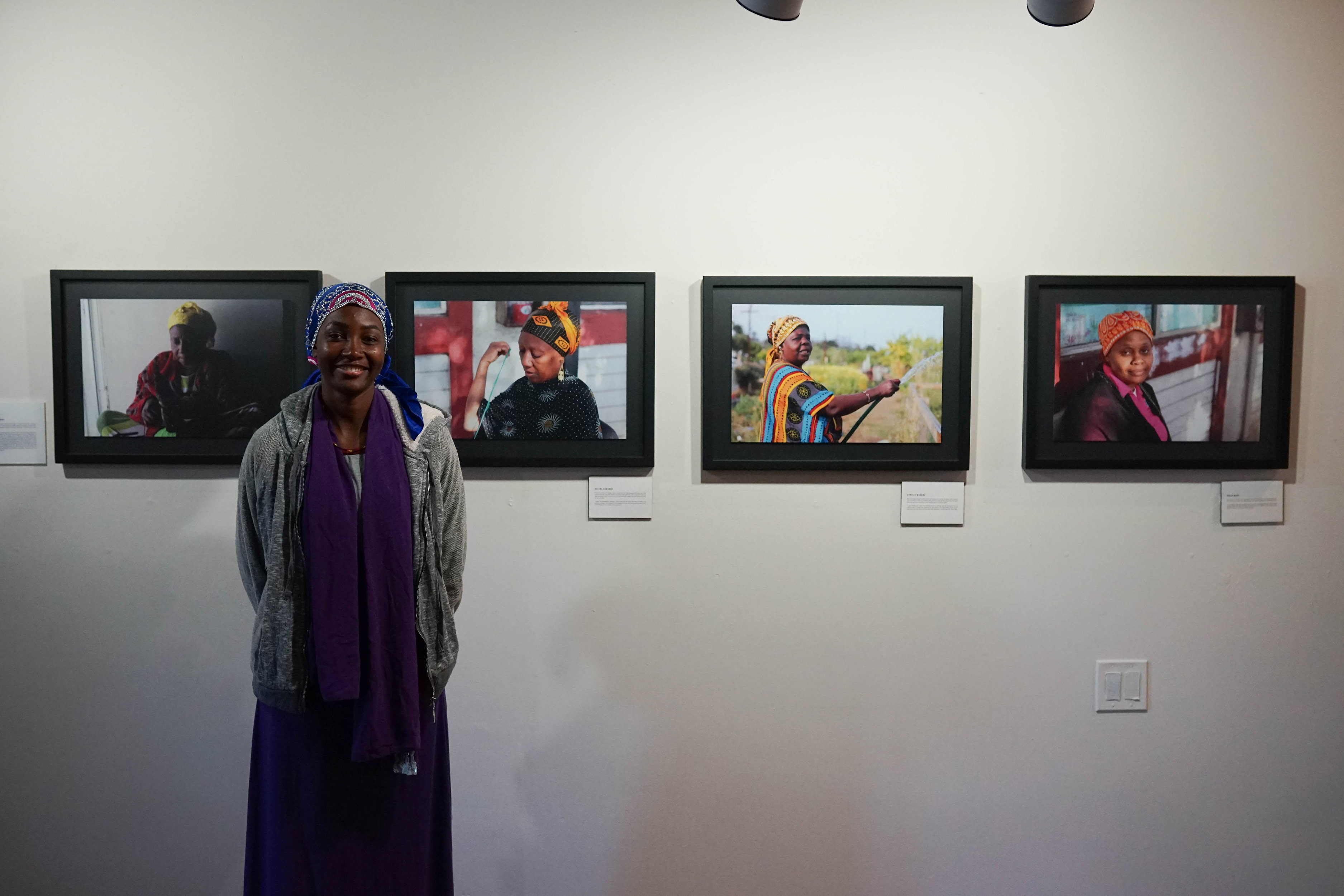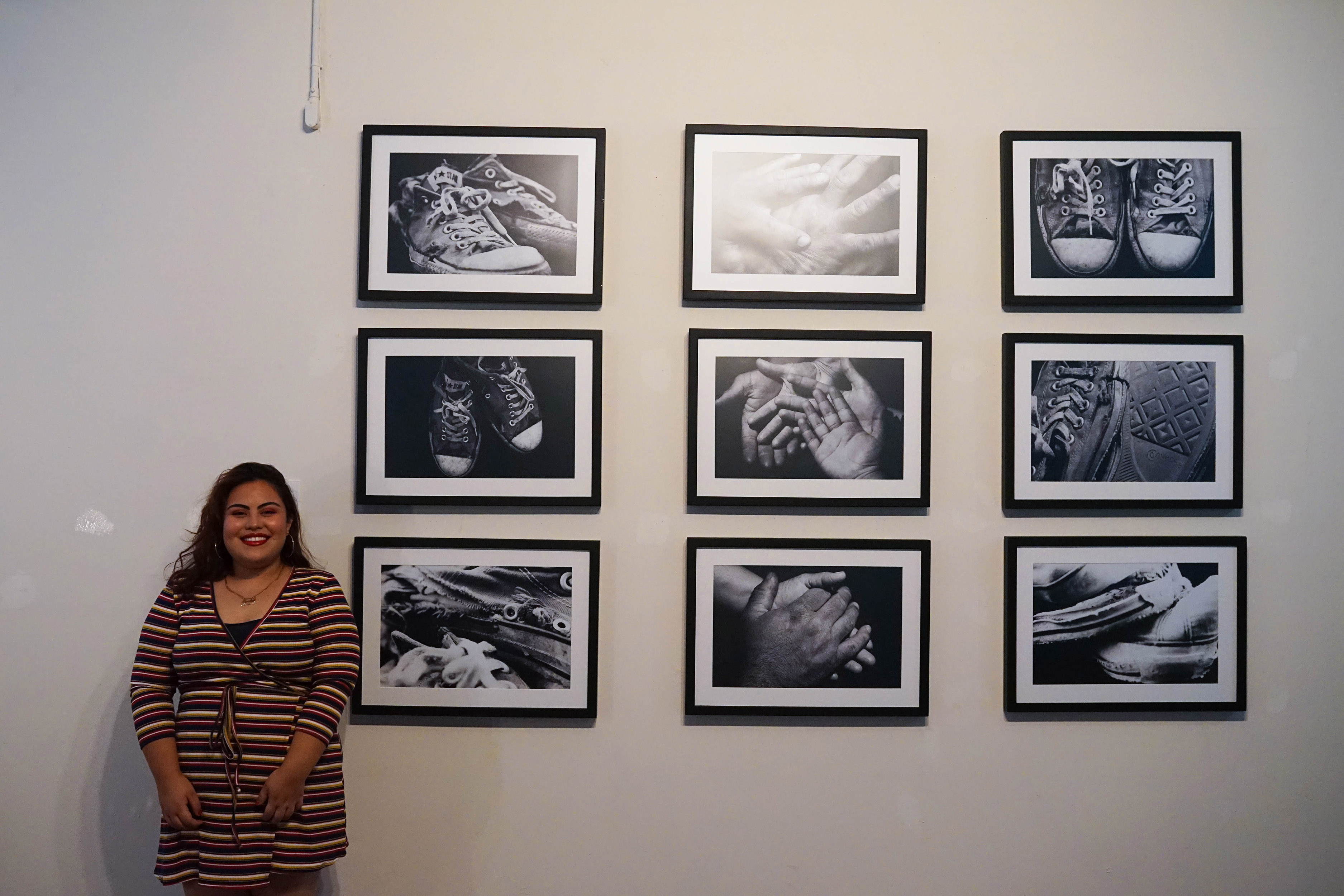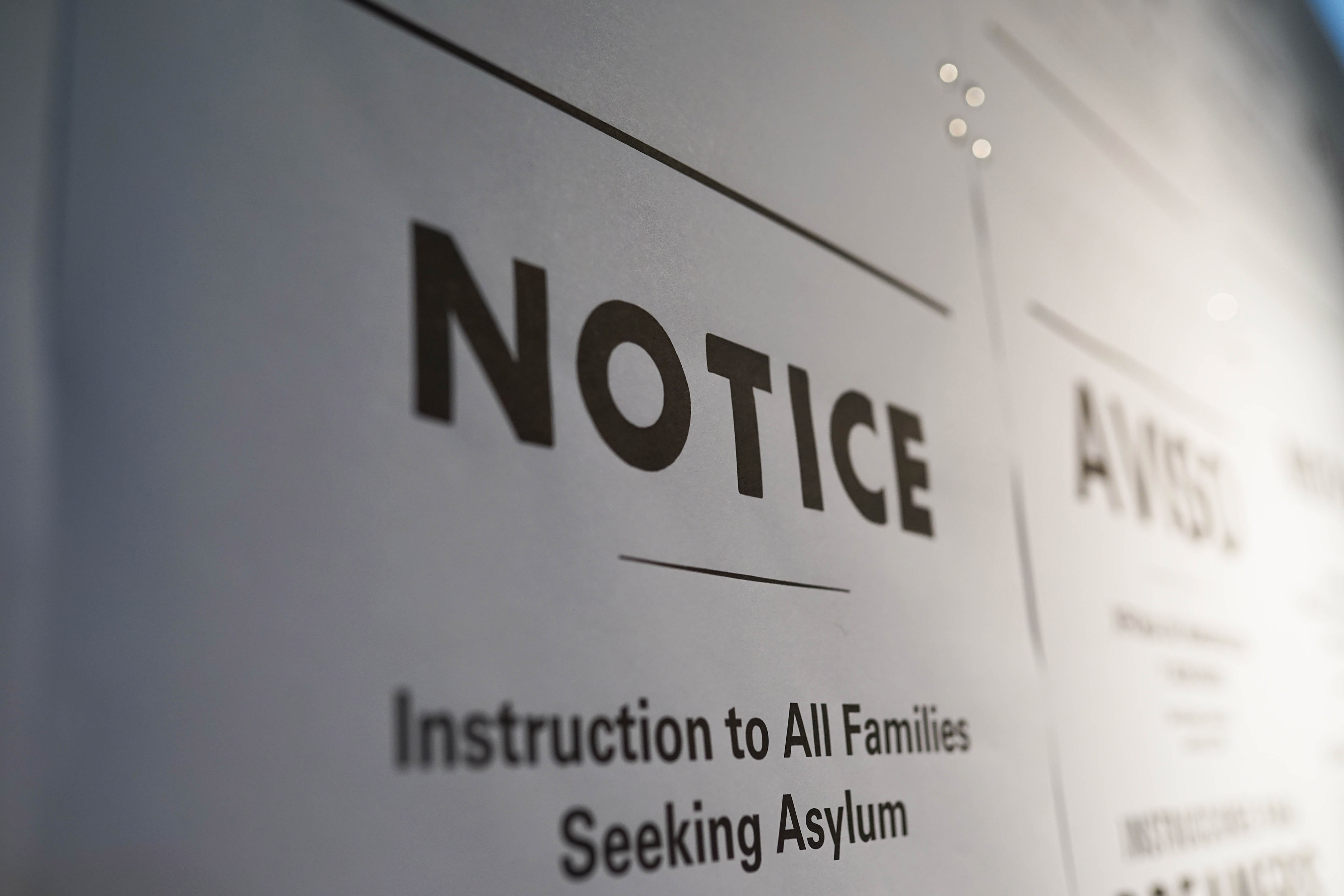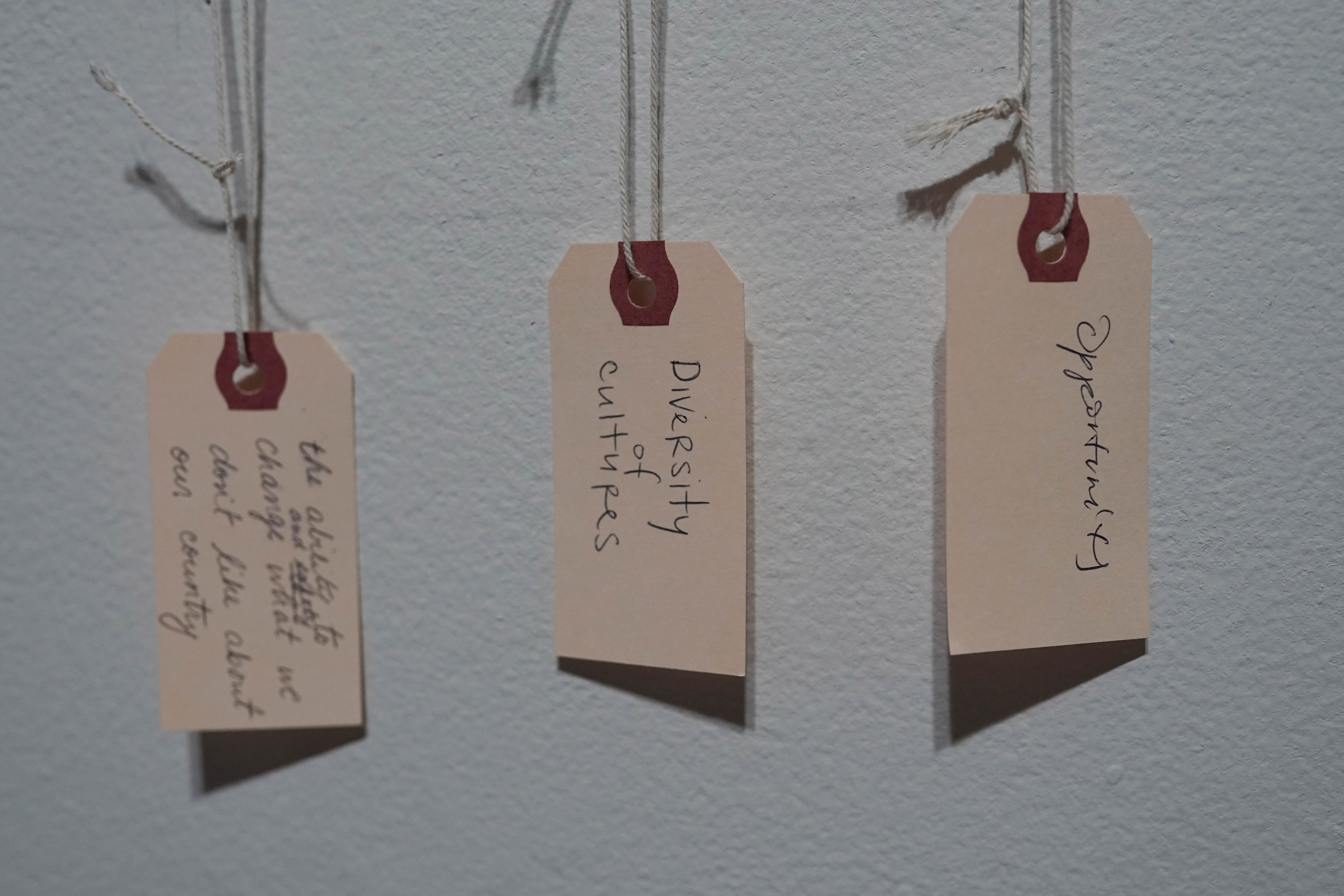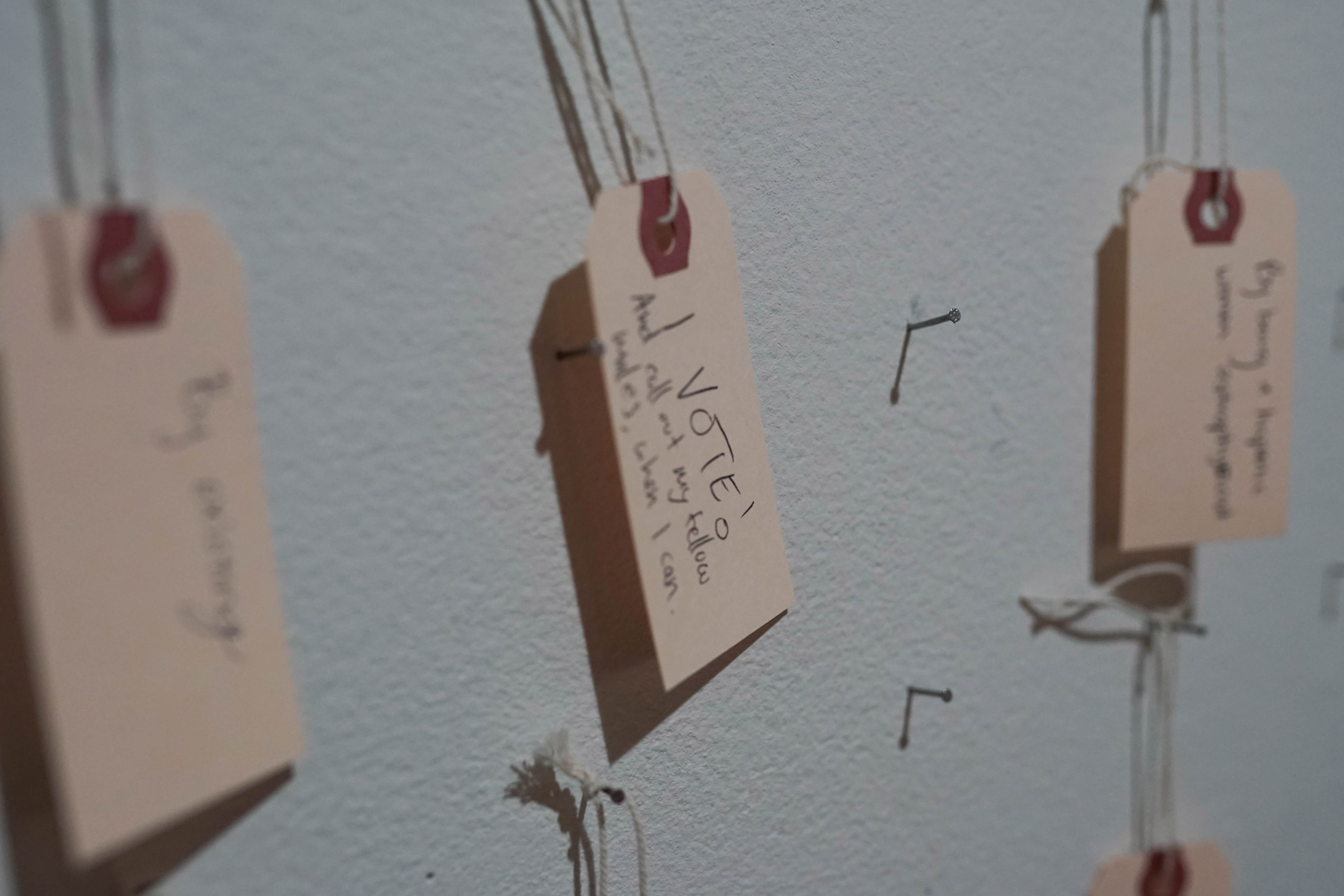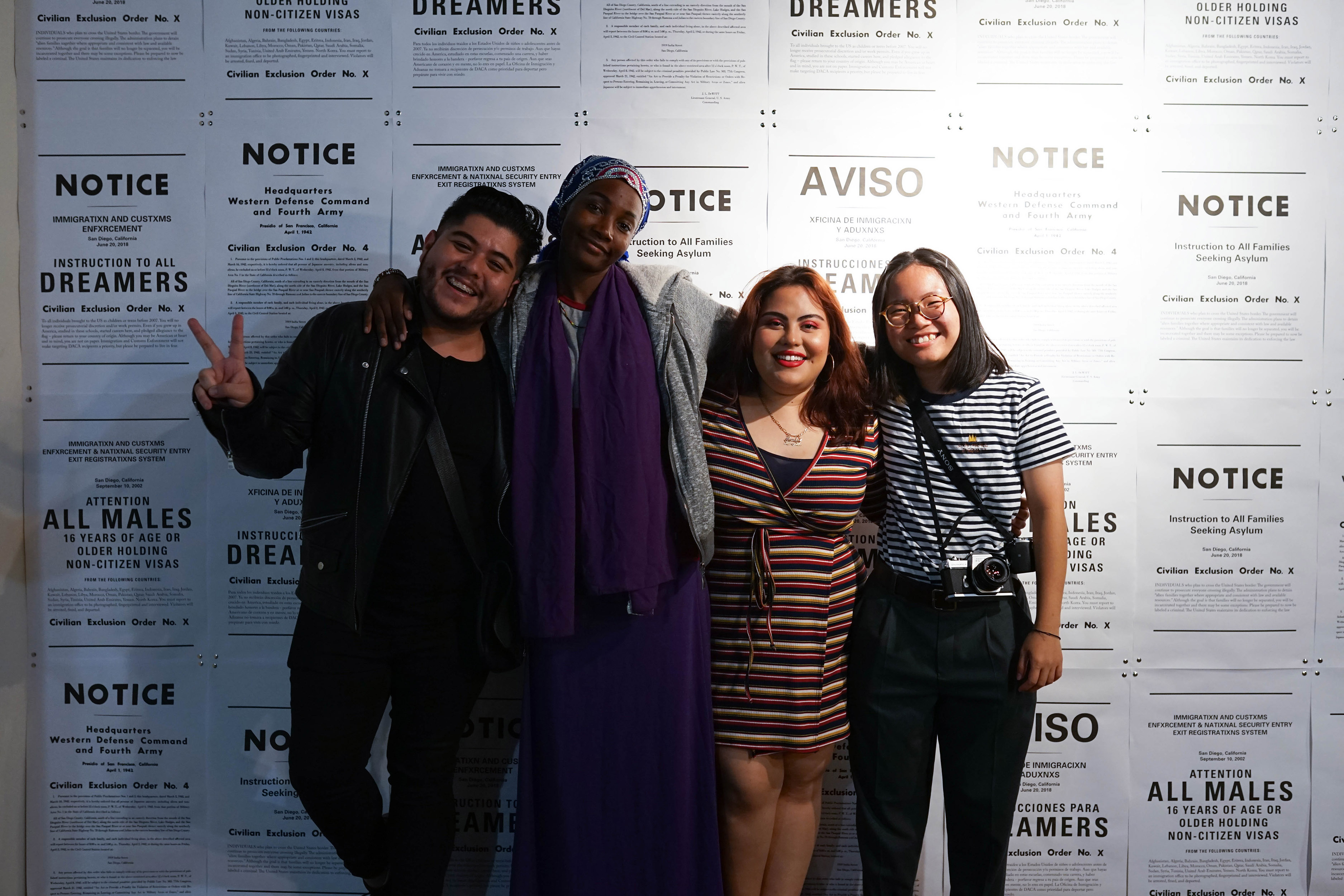Project Description
Our Collective Truth: Examining Civil Liberties in America
2018 – 2019 / The Front Gallery
This exhibition presents the work of four artists who are each, in their own ways, affected by the legacies of the wartime incarceration of Japanese Americans. They have studied and grappled with the diverse factors that contributed to making Japanese Americans vulnerable when the US and Japan went to war in 1941, and their work reflects on the parallels between the historic experiences from over 70 years ago and their own experiences now.
The contradiction between the promises and reality of the US remain the same, even as things have changed. The lessons to be learned from the incarceration of Japanese Americans are even more relevant today. We welcome visitors to take part in this process by participating in the interactive walls.
Organized by The AjA Project and generously funded by the California Civil Liberties Public Education Program, this project connected participants to the history of the World War II incarceration of Japanese Americans and invited them to create their own work after reflecting on how the historical experiences were photographed, documented, and narrated.
WHO PROTECTS THE VULNERABLE IN TIMES OF FEAR AND UNCERTAINTY?
WHO ARE THE VULNERABLE AMONG US?
In the United States in 1942, the vulnerable were people of Japanese ancestry. Two-thirds were American citizens by birth. But they had been subject to decades of suspicion and hostility because they were different: economic competitors, people who ate different foods and spoke different languages, and associated with a different part of the world. Once Japan and the US were at war, these Americans of Japanese ancestry and their immigrant parents were forced from their homes and incarcerated in large-scale detention centers. They were never charged with a crime.


